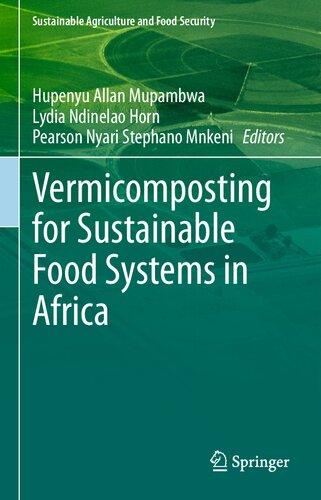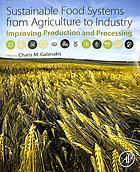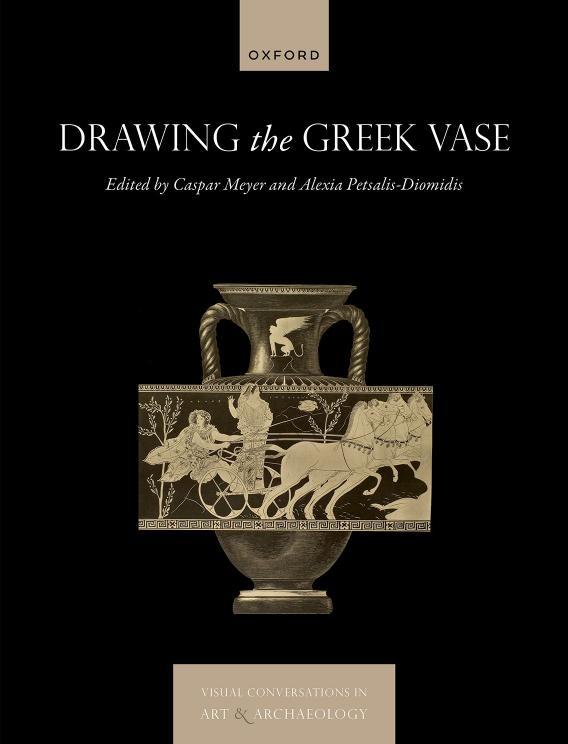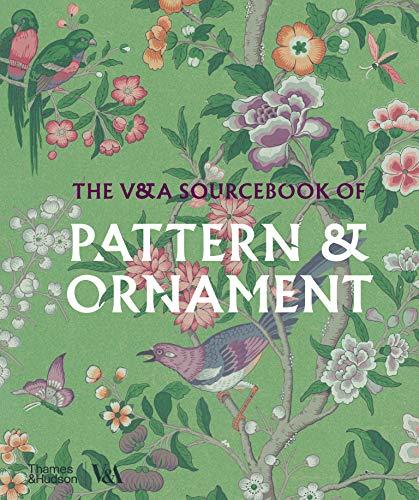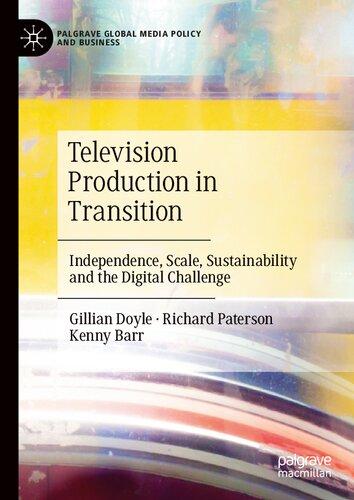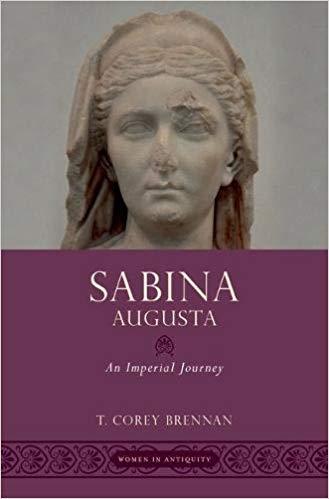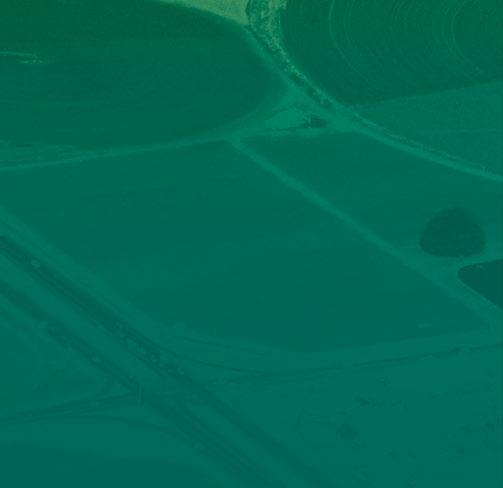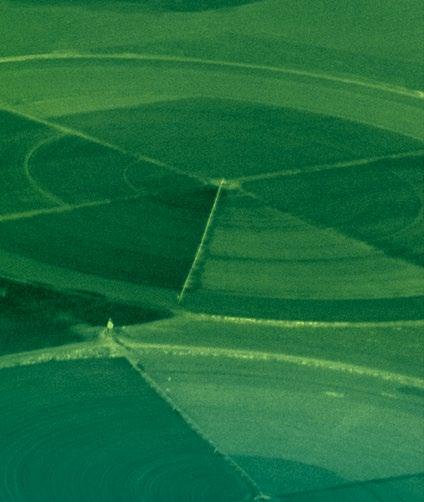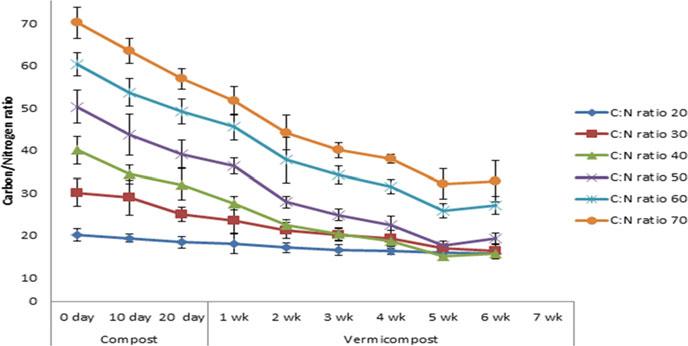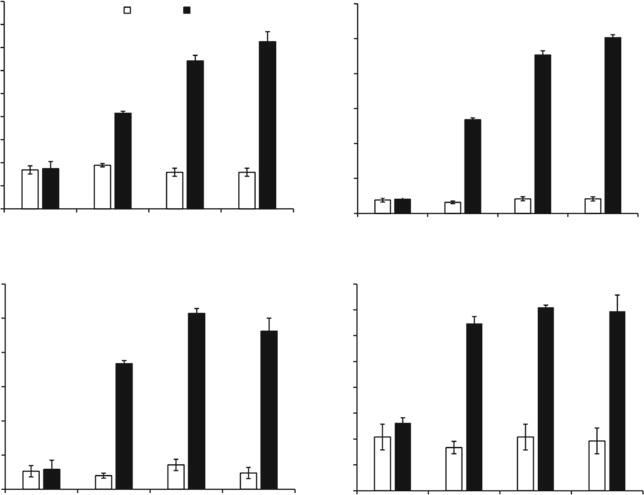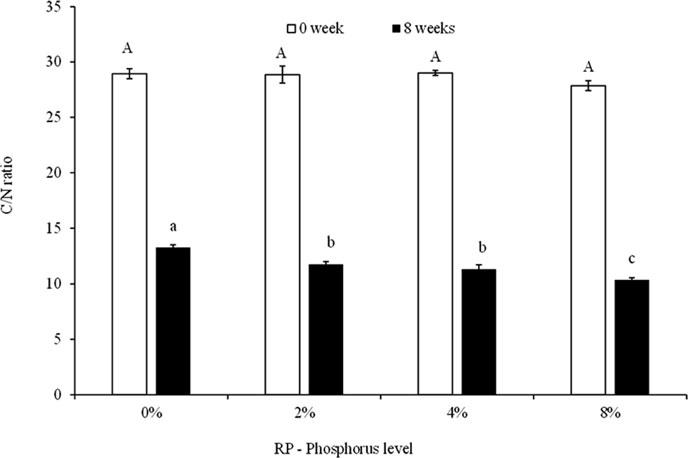https://ebookmass.com/product/vermicomposting-forsustainable-food-systems-in-africa-1st-edition-hupenyu-
Instant digital products (PDF, ePub, MOBI) ready for you
Download now and discover formats that fit your needs...
Sustainable food waste-to-energy systems Babbitt
https://ebookmass.com/product/sustainable-food-waste-to-energysystems-babbitt/
ebookmass.com
Sustainable Food Systems from Agriculture to Industry Improving Production and Processing Galanakis
https://ebookmass.com/product/sustainable-food-systems-fromagriculture-to-industry-improving-production-and-processing-galanakis/
ebookmass.com
Sustainable biofloc systems for marine shrimp Samocha
https://ebookmass.com/product/sustainable-biofloc-systems-for-marineshrimp-samocha/
ebookmass.com
Drawing the Greek Vase Caspar Meyer
https://ebookmass.com/product/drawing-the-greek-vase-caspar-meyer/
ebookmass.com
Claiming Glass: A Cinderella Retelling (Tales of Bones and Roses Book
2) Liv Strom https://ebookmass.com/product/claiming-glass-a-cinderella-retellingtales-of-bones-and-roses-book-2-liv-strom/
ebookmass.com
The V&A Sourcebook of Pattern & Ornament Amelia Calver
https://ebookmass.com/product/the-va-sourcebook-of-pattern-ornamentamelia-calver/
ebookmass.com
Abducted by the Bratva: Forced Marriage Mafia Romance (Zolotov Bratva Book 1) Isla Brooks
https://ebookmass.com/product/abducted-by-the-bratva-forced-marriagemafia-romance-zolotov-bratva-book-1-isla-brooks/
ebookmass.com
Television Production in Transition: Independence, Scale, Sustainability and the Digital Challenge (Palgrave Global Media Policy and Business) 1st ed. 2021 Edition Gillian
Doyle https://ebookmass.com/product/television-production-in-transitionindependence-scale-sustainability-and-the-digital-challenge-palgraveglobal-media-policy-and-business-1st-ed-2021-edition-gillian-doyle/ ebookmass.com
Key Terms in Comics Studies Erin La Cour
https://ebookmass.com/product/key-terms-in-comics-studies-erin-lacour/
ebookmass.com
https://ebookmass.com/product/sabina-augusta-an-imperial-journey-tcorey-brennan/
ebookmass.com
Hupenyu Allan Mupambwa
Lydia Ndinelao Horn
Pearson Nyari Stephano Mnkeni Editors
Vermicomposting for Sustainable Food Systems in Africa SustainabilitySciencesinAsiaandAfrica SustainableAgricultureandFoodSecurity SeriesEditor RajeevK.Varshney,Semi-AridTropics,InternationalCropsResearchInstitute, Patancheru,Telangana,India
Thisbookseriessupporttheglobaleffortstowardssustainabilitybyprovidingtimely coverageoftheprogress,opportunities,andchallengesofsustainablefoodproductionandconsumptioninAsiaandAfrica.Theseriesnarratesthesuccessstoriesand researchendeavorsfromtheregionsofAfricaandAsiaonissuesrelatingtoSDG2: Zerohunger.Itfosterstheresearchintransdisciplinaryacademic fieldsspanning acrosssustainableagriculturesystemsandpractices,post-harvestandfoodsupply chains.Itwillalsofocusonbreedingprogramsforresilientcrops,efficiencyincrop cycle,variousfactorsoffoodsecurity,aswellasimprovingnutritionandcurbing hungerandmalnutrition.Thefocusoftheseriesistoprovideacomprehensive publicationplatformandactasaknowledgeengineinthegrowthofsustainability scienceswithaspecialfocusondevelopingnations.Theserieswillpublishmainly editedvolumesbutsomeauthoredvolumes.Thesevolumeswillhavechaptersfrom eminentpersonalitiesintheirareaofresearchfromdifferentpartsoftheworld.
LydiaNdinelaoHorn 2
PearsonNyariStephanoMnkeni
Editors
Vermicomposting forSustainableFoodSystems inAfrica Editors HupenyuAllanMupambwa SamNujomaMarineandCoastal ResourcesResearchCenter UniversityofNamibia HentiesBay,Namibia
PearsonNyariStephanoMnkeni FacultyofScienceandTechnology UniversityofArusha Arusha,Tanzania
LydiaNdinelaoHorn
CentreforResearchServices
UniversityofNamibia Windhoek,Namibia
ISSN2730-6771
ISSN2730-678X(electronic)
SustainabilitySciencesinAsiaandAfrica
ISSN2730-6798
ISSN2730-6801(electronic) SustainableAgricultureandFoodSecurity
ISBN978-981-19-8079-4ISBN978-981-19-8080-0(eBook) https://doi.org/10.1007/978-981-19-8080-0
© TheEditor(s)(ifapplicable)andTheAuthor(s),underexclusivelicensetoSpringerNatureSingapore PteLtd.2023
Thisworkissubjecttocopyright.AllrightsaresolelyandexclusivelylicensedbythePublisher,whether thewholeorpartofthematerialisconcerned,specificallytherightsoftranslation,reprinting,reuseof illustrations,recitation,broadcasting,reproductiononmicrofilmsorinanyotherphysicalway,and transmissionorinformationstorageandretrieval,electronicadaptation,computersoftware,orby similarordissimilarmethodologynowknownorhereafterdeveloped.
Theuseofgeneraldescriptivenames,registerednames,trademarks,servicemarks,etc.inthispublication doesnotimply,evenintheabsenceofaspecificstatement,thatsuchnamesareexemptfromtherelevant protectivelawsandregulationsandthereforefreeforgeneraluse.
Thepublisher,theauthors,andtheeditorsaresafetoassumethattheadviceandinformationinthis bookarebelievedtobetrueandaccurateatthedateofpublication.Neitherthepublishernortheauthorsor theeditorsgiveawarranty,expressedorimplied,withrespecttothematerialcontainedhereinorforany errorsoromissionsthatmayhavebeenmade.Thepublisherremainsneutralwithregardtojurisdictional claimsinpublishedmapsandinstitutionalaffiliations.
ThisSpringerimprintispublishedbytheregisteredcompanySpringerNatureSingaporePteLtd. Theregisteredcompanyaddressis:152BeachRoad,#21-01/04GatewayEast,Singapore189721, Singapore
4 AnOutstandingPerspectiveonBiologicalDynamicsin VermicompostingMatrices ...............................
JerikiasMarumure,ZakioMakuvara,ClaudiousGufe, RichwellAlufasi,NgavaiteChigede,andRangarirayiKaridzagundi
5 InsightsintoEarthwormBiologyforVermicomposting 89 RutendoNyamusamba,ReaganMudziwapasi,FortuneJomane, UnityMugande,AbigarlNdudzo,SiceloSebata, andMorleenMuteveri
6 VermicompostingasanEco-FriendlyApproachforRecycling andValorizationGrapeWaste ............................
MaríaGómez-Brandón,ManuelAira,andJorgeDomínguez
7 Vermitechnology:AnUnderutilisedAgro-toolinAfrica .........
EbenezerOlasunkanmiDadaandYusufOlamilekanBalogun
P.Nyambo,L.Zhou,T.Chuma,A.Sokombela,M.E.Malobane, andM.Musokwa
BrendanM.Matomola,SimonT.Angombe,RhodaBirech, andHupenyuA.Mupambwa
SinazoAjibade,HupenyuAllanMupambwa,BarbaraSimon, andMiklosGulyas
AFarmers’ SynthesisontheEffectsofVermicompostsonSoil
AdornisD.Nciizah,HupenyuA.Mupambwa,PatrickNyambo, andBinganidzoMuchara 12 VermicompostasaPossibleSolutiontoSoilFertilityProblems andEnrichmentintheSemiaridZonesofNamibia
S.N.Nghituwamhata,L.N.Horn,andS.N.Ashipala
13 RoleofVermicompostinOrganicVegetableProductionUnder Resource-ConstrainedFamersinZimbabwe .................. 213 CosmasParwadaandJustinChipomho
14 Co-applicationofVermicompostwithOtherAmendments fortheImprovementofInfertile/DegradedSoils ...............
AkinsonTumbure,CharityPisa,andPardonMuchaonyerwa
15 SustainableEnhancementofSoilFertilityUsingBioinoculants ... . 249 MukelabaiFlorenceandChimwamurombePercy
16 ThePotentialofVermicompostsinSustainableCrop ProductionSystems 261 M.T.Mubvuma,I.Nyambiya,K.Makaza,P.Chidoko, C.P.Mudzengi,E.Dahwa,X.Poshiwa,R.Nyamusamba, A.M.Manyanga,M.Muteveri,andH.A.Mupambwa
17 VermicompostandVermi-leachateinPestandDisease Management 279 K.Sivasabari,S.Parthasarathy,DeepakChandran,S.Sankaralingam, andR.Ajaykumar
18 Vermicompost:APotentialReservoirofAntimicrobialResistant Microbes(ARMs)andGenes(ARGs) ....................... 307 ZakioMakuvara,JerikiasMarumure,RangarirayiKaridzagundi, ClaudiousGufe,andRichwellAlufasi
19 PotentialTransformationofOrganicWasteinAfrican CountriesbyUsingVermicompostingTechnology ............. 335 ParveenFatemehRupani,AshaEmbrandiri, HupenyuAllanMupambwa,andJorgeDomínguez
20 EarthwormsinBioremediationofSoilsContaminatedwith PetroleumHydrocarbons ................................ 349 AbdullahAnsari,JonathanWrights,andSirpaulJaikishun
AbouttheEditors HupenyuAllanMupambwa holdsaPhDinSoilScience,wherehisresearch focusedonvermicompostingasawastebeneficiationtechnologyimportantin drivingorganicsoilfertility.Currently,heleadstheDesertandCoastalAgriculture researchprogramattheUniversityofNamibia.Hehasmorethan14years’ experienceinagricultureresearchandtrainingaswellasuniversityundergraduateand postgraduateteachingandresearch.Hehaspublishedmorethan25peer-reviewed internationalpublications,11bookchapters,andedited1book.Hisresearchfocuses onwastebeneficiation,vermi-technology,andorganicsoilfertilitymanagement withadrivetowardsimprovingthesoilqualityamongresource-poorfarmers.
LydiaNdinelaoHorn isaResearchCoordinatorattheMultidisciplinaryResearch Services(MRS)Department,UniversityofNamibia(UNAM).SheholdsaBScin Agriculture(CropScience)andanMScinBiodiversityManagementandResearch fromUNAM.SheobtainedaPhDinPlantBreedingfromtheUniversityofKwaZulu-NatalundertheTCAfricasponsorshipinpromotingwomeninnuclearscience andtechnology.Asaplantbreeder,herroleincropimprovementusingnuclear scienceandtechnologyledtothedevelopmentofNamibia’s first-evermutantthe developmentofthe first-evergermplasmsofcowpea,Bambaragroundnutpearl millet,andsorghum.
PearsonNyariStephanoMnkeni workedasaprofessorofsoilscienceatthe UniversityofFortHare(UFH),SouthAfrica,untilhisretirementin2018.Before 1997,heservedasanAssociateProfessorinSoilScienceattheSokoineUniversity ofAgricultureinMorogoro,Tanzania.HeispresentlyDeanofScienceandTechnologyandActingDeputyViceChancellorforPlanning,Administrationand FinanceattheUniversityofArusha,Tanzania.Hisresearchfocushasbeenon waysofimprovingsoilfertilityusingecologicalapproachesthatminimizethe carbon,energy,andwaterfootprintsofcropproduction.Heinitiatedandled
climate-smartagricultureresearchatUFH.Heledthedevelopmentofclimate-smart agricultureguidelinesforSouthAfricaasaconsultantfortheUnitedNations EnvironmentalProgramme(UNEP)in2018.Hehaspublishedover90articlesand isrankedasanestablishedresearcherbytheNationalResearchFoundationofSouth Africa.
Chapter1 ADecadeofVermicompostingResearch attheUniversityofFortHare:Selected Insights PearsonNyariStephanoMnkeniandHupenyuA.Mupambwa
Abstract TheworksummarizedinthischapterhighlightsworkdoneattheUniversityofFortHare(UFH)inSouthAfricaoverapproximately10yearsfocussing ontheoptimizationofthevermicompostingprocesstoproducestabilizedand nutrientrichorganicfertilizerfreeofpathogens.Thepotentialoftheresultant optimizedvermicompostsassoilamendmentsinagricultureisalsohighlighted. Thehighlighted findingsshowedthat:(1)optimizingtheC:Nratiooffeedstock materialsandearthwormstockingdensityiscriticallyimportantforeffective vermicomposting,(2)theoptimumfeedstockC:Nratioforvermicompostingvaried withthetypeofwastemixture,theC:Nratioforcowdung-wastepapermixtures wasfoundtobe30whilstthatforchickenmanure-wastepapermixtureswas 40,(3)theoptimumearthwormstockingalsovariedwithtypeoffeedstockmaterial butgenerallyanearthwormstockingdensityrangeof22.5–37.5g-wormkg-1 feedstockmixturewasfoundtobeidealforcowdungwastepapermixturesas wellas flyash-cowdung-wastepapermixtures,(4)aprecompostingperiodof 1weekwasidealforthevermicompostingandsanitizationofcowdung waste papermixtures,(5)acombinationofthermophiliccompostingandvermicomposting using Eiseniafetida waseffectiveinsubstantiallyreducingtheconcentrationsof oxytetracyclineanditsmetabolites4-epi-oxytetracycline,a-apo-oxytetracyclineand b-apooxytetracyclineinchickenmanuresmixedwithshreddedwastepaperoptimizedataC:Nratioof40,(6)incorporationofphosphaterockandcoal flyashin cattlemanure-wastepaperfeedstockmixturesimprovedthebiodegradationofthe mixturesandnutrientvalueoftheresultingvermicomposts,(7)thecombinationof Eiseniafetida plus Pseudomonas fluorescens acceleratedthebiodegradationprocess invermicomposting,(8)optimizedvermicompostsproducedthroughthesestudies provedtobegoodcomponentsofvegetableandornamentalplantsgrowingmedia,
P.N.S.Mnkeni(✉)
FacultyofScienceandTechnology,UniversityofArusha,UsaRiver,Arusha,Tanzania
H.A.Mupambwa
SamNujomaMarineandCoastalResourcesResearchCenter,UniversityofNamibia, HentiesBay,Namibia
© TheAuthor(s),underexclusivelicensetoSpringerNatureSingaporePteLtd.2023
H.A.Mupambwaetal.(eds.), VermicompostingforSustainableFoodSystems inAfrica,SustainableAgricultureandFoodSecurity, https://doi.org/10.1007/978-981-19-8080-0_1
(9)Flyashenrichedvermicompostappliedat40mg-P/kgFVprovedtobean effectiveamendmentforthegrowthof Chlorisgayana grownonagoldmine wasteaffectedsoiltherebyindicatingitspotentialforthephyto-stabilizationof soilsdegradedbyminewastes.Itishopedthatthese findingswillprovetobea steppingstoneforfurtherresearchworkonvermicompostinginSouthAfricaand otherpartsofthecontinent.
Keywords Vermicomposting·C:Nratio· Eiseniafetida ·Earthwormstocking density·Manure·Flyash·Sanitization·Antibiotics·Growingmedia
1.1Introduction Therapidlygrowingworldpopulationhaspromptedanintensi ficationofagriculturalandassociatedindustrialactivitiestomeetthegrowingdemandforfood (MupambwaandMnkeni 2018).Theintensificationofcropproductionisbeing donemostlythroughextensiveuseofsyntheticinorganicfertilizerswhichareknown tohavenegativeconsequencesonsoilhealthanditsfunction.Thesenegative impactsofinorganicfertilizersonsoilhealthhavestimulatedinterestintheuseof soilhealthcompatibleorganicnutrientsourceslikevermicomposts(Aranconetal. 2004, 2008).
Vermicompostsareaproductoftheactionofmainlyepigeicearthwormspecies andmicroorganismswhichdrivethemineralizationoforganicnutrientsinorganic materials(MupambwaandMnkeni 2018).Unliketraditionalthermophilic composting,vermicompostingonlyoccursundermesophilicconditions. Vermicompostsprovidenotonlynutrientsforplantgrowthbutarealsohumic acidsandplantgrowthhormones(Singhetal. 2008).Thegreatestlimitationtothe adoptionofvermicompostincommercialagricultureisthewidevariationintheir qualitywhichisdependentonthequalityoforganicmaterialsused,methodof preparation,earthwormspeciesandstockingdensity,amongotherfactors.Research onoptimizationandstandardizationoftheproductionproceduresofvermicomposts isthuscriticalsoastoenabletheproductionofvermicompostswithpredictable biologicalparametersandnutrientcomposition.
Animalmanureswhicharethemainorganicwastesusedinvermicomposting containpathogenicfaecalbacteriasuchas Escherichiacoli 0157(O’Connor 2002). Asaresult,rawanimalmanuresandmanure-basedsoilamendmentshavebeen implicatedinoutbreaksof E.coli 0157:H7infectionsfromeatingspinach,lettuce andothercropproducecontaminatedwiththeseorganisms(Ackersetal. 1998; Rangeletal. 2005;CDCP 2006).Parasiticprotozoacanalsobetransmittedtofood cropswhenmanurecontainingtheseorganismsisusedasafertilizerorsoil amendmentorthroughotherinadvertentcontact(Cieslaketal. 1993;Natvigetal. 2002).Managementstrategiesthatcaneliminate E.coli andparasiticprotozoain vermicompostsarethereforenecessary.
The intensive use of veterinary antibiotics (VAs) is a common practice for both prophylactic and therapeutic purposes in the livestock industry (Selvam et al. 2012;
Tzengetal. 2016).However,asmuchas30–90%ofveterinaryantibioticsmaybe excretedasparentcompoundsorbioactivemetabolitesthroughanimalfaecesor urineduetopoorabsorptionbyanimals(Nelsonetal. 2011).Itis,therefore, importantthatthebiodegradabilityofantibioticsandtheirmetabolitesduring vermicompostingbeestablished.
Thevermicompostingprocessinvolvessynergybetweenearthwormsand microbesandrequiresabalancedsupplyofmainlycarbon,nitrogenandphosphorus, whicharethemainelementsrequiredinproteinformation,energygenerationand reproductionineverylivingorganism(Bernaletal. 2009;NdegwaandThompson 2000).DuetothelinkbetweenC,NandPtothevermicompostingprocess,itis likelythatprocesseslikenutrientmineralization,bio-stabilizationandearthworm developmentwillbecompromisedifthesearenotbalancedduringthe vermicompostingprocess(ChangandCheng 2010).
Severalresearchershaveuseddifferentorganicmaterialsforvermicomposting suchascowdung(Lazcanoetal. 2008),pigmanure(Airaetal. 2006),chicken manure(RavindranandMnkeni 2016),householdwastes(Fredericksonetal. 2007), sewagesludge(MaboetaandVanRensburg 2003),wastepaper(GuptaandGarg 2009)amongothers.Fewstudieshave,however,triedtooptimizethesedifferent organicmaterialsbeforevermicompostingtoallowforeffectivevermi-degradation. Thestockingdensityandtypeofearthwormspeciesduringvermicompostingisalso importantasitaffectsthegrowthandreproductionofearthworms,thusdirectly influencingthebio-chemicalprocessestakingplacewithinthevermicompost (MupambwaandMnkeni 2016).
Thelowmacronutrientconcentrationsofvermicompostsrelativetoinorganic fertilizersisamongthemajorlimitationstothesustaineduseofvermicompostsin agriculture.Amongthemacronutrients,phosphorus(P)istheleastmobileandleast available,withitssoilbioavailabilitybeingamajorbottleneckincropproduction (Gichangietal. 2008).Inorganicbasedsoilfertilitymanagement,improvingthe availabilityofsoilphosphorushasbeenreportedtobecritical(Edwardsetal. 2010) henceitneedstobefactoredinstrategiesforthenutrientenrichmentof vermicomposts.TheinclusionofinorganicmaterialswithveryhightotalconcentrationsofPisonesuchstrategyforimprovingthePnutritionofvermicomposts (Mupambwaetal. 2016;Busatoetal. 2012;UnuofinandMnkeni 2014).Itis believedthattheactionofearthwormsandmicrobesduringvermicompostingcan beusedtoenhancemineralizationofthePboundintheinorganicmaterials,thus generatingaphosphorusrichvermicompost.
ThisbookchaptersummarizeshighlightsofresearchworkdoneattheUniversity ofFortHare(UFH)inSouthAfricaovera10years’ periodaddressingsomeofthe gapsinknowledgepointedabove.Themainfocusoftheworkwasoptimizationof thevermicompostingprocessandsoughttoaddressthefollowingquestions:
1. What are the most optimum condit ions for the vermicompost ing that will result in stabili zed and nutrient rich organic fertilizer free of pathogens over the shortest period?
2. Whatopportunitiesareavailableforimprovingthevermicompostingprocessin termsofnutrientcomposition,biodegradationandthebiologicalsafet yof the resultingcompost?
3. Whatisthepotentialofthevermicompostsproducedassoilamendmentsin agriculture?
1.2OptimizationoftheVermi-degradationProcess ThevermicompostingresearchatUFHwasdoneusinglocallyavailablematerialsin theEasternCapeaswellasotherpartsofSouthAfrica.Amongthesematerialsare varioustypesofanimalmanuressuchascattle,goat,sheep,chickenandpig manures.ThemostcommontypeofanimalmanureiscattlemanurewhichMalherbe (1964)differentiatedas:
(i) Stablemanurewhichhaslargeamountsofbeddingandisnotolderthanayear. Itisfoundmainlyinthewinter-rainfallregionsoftheWesternCape, SouthAfrica.
(ii) Kraalmanurewhichcontainslittle,ifany,beddingandhasaccumulatedovera periodofayearorlonger.Itisfoundinthesummerrainfallregionsof SouthAfricaforexample,FreeState,TransvaalandtheEasternCape.Thisis themainorganicmaterialusedinstudiesreportedherein.
(iii) Karoomanureordungwhichisnormallyfoundinkraalsinthearidsheep (orgoat)areas.Itisusuallyfairlyoldandcontainsnobeddingmaterialatall.
TheUFHlikeotheracademicinstitutionsgenerateslargevolumesofwastepaper whichisoftenincinerated,contributingtogreenhousegasesintheatmosphere.This isanothermaterialthatwasextensivelyusedinstudiesreportedhereinwithaviewto encourageitsrecyclingandvalorization.
Theinorganicmaterialsusedasamendmentsinsomestudiessummarizedinthis chapterarerockphosphateandcoal flyash.Therockphosphateisofigneousorigin minedbyFoskorLtdinPhalaborwa,LimpopoProvince,SouthAfrica(Mupondi etal. 2018).Coal flyashwasobtainedfromcoal-poweredelectricitystationsin Mpumalanga,SouthAfrica(MupambwaandMnkeni 2015).
The critical parameters that drive the earthworm-m icrobe driven process whose end product is vermicomp ost are C: N and C: P ratios of the organic materials to be vermicompost ed, substrate biodegradat ion fraction, earthwor m species and stocking density Some of these parameters had not been adeq uately optimized for the material s used for composting in South Africa so the work done at UFH and summari zed in this chapter sought to address this need.
1.2.1OptimizingtheC:NRatio Thevermicompostingprocessisdrivenbymicroorganismsandtheseneedcarbonas asourceofenergyandforcelldevelopmentandnitrogenforbuildingcellmaterials. However,ifthereistoomuchcarbonrelativetonitrogenduringvermicomposting, decompositionissloweddownastherewillbelessNforproteinsynthesisbythe microbesleadingtothegradualdeathofthemicroorganisms(Tuomelaetal. 2000). Forpropernutritionofbothearthwormsandmicroorganisms,itisofparamount importancethatcarbonandnitrogenbepresentatanappropriateratio(Ndegwaand Thompson 2000).
TwostudieshaveaddressedtheoptimizationoftheC:Nratioof vermicompostingmixturesatUFH.AstudybyMupondi(2010)investigatedthe effectofC:Nratioandcompostingmethodonthebiodegradationofmixturesof dairycowmanureandwastepaper.Thestudycomparedvermicompostingand combinedthermophiliccompostingandvermicompostingonthevermi-degradation ofmixturesofdairymanureandwastepapermixedtohaveC:Nratiosof30and 45asfeedstock.Resultsofselectedmaturityparametersobtainedafter8weeksof composting(Table 1.1)showedthatgreatervermi-degradationbybothcombined compostingandvermicompostingwasobservedwithfeedstockdairymanure-paper wastemixtureswithC:Nratioof30thanthosewithaC:Nratioof45.TheC:N ratiosoffeedstockmixturesdecreasedto29,22and23after4weeksandfurther decreasedto25,14and15in final(week8)compostsinthecontrol,vermicompost andcombinedthermophilicandvermicompostingtreatments,respectively (Table 1.1).Bycontrast,theC:Nratiosofdairymanure-wastepapermixtures withaC:Nratioof45alsodecreasedwithtimereachingvaluesof38,36and 33in final(week8)forthecontrol,vermicompostandcombinedcompost vermicomposttreatments,respectively(Table 1.1).AccordingtoBernal etal.(2009),compostswitha finalC:Nratiosof14and15couldbeaddedtosoil withoutalteringthemicrobiologicalequilibriumofthesoilsovermicompostsfrom dairymanure-wastepapermixturesmixedtoprovideaninitialC:Nratioof30could safelybeappliedtothesoil.Thehumi ficationparameters(HI)and(HR)inthe final compostswerealsohighestinthedairymanure-wastepapermixtureswhose initialC:Nratiowas30.Therefore,thefeedstockmixturesofdairymanureand paperwastewithC:Nratioof30provedtobemoresuitableforcomposting/ vermicompostingastheseproducedmorematureandhumi fiedcompostthanwastes withaC:Nratioof45.Bothvermicompostingandcombinedcompostingand vermicompostingwereeffectivemethodsforthebiodegradationofmixturesof dairymanureandpaperwastewithC:Nratioof30.
The second study sought to determin e the optimum C: N ratio for converting waste paper and chicken manure to a nutrie nt rich manure with minimum toxicity (Ravindran and Mnkeni 2016). Six treat ments of feedst ock C: N ratio 20 (T1), 30 (T2), 40 (T3), 50 (T4), 60 (T5) and 70 (T6) achieved by mixing chicken manure with shredded paper were used. The study involved a therm ophilic precom posting phase for 20 days followed by vermicom posting with Eisenia fetida for 7 weeks. The
Table1.1 EffectofcompostingmethodandC:Nratioofdairymanureandpaperwastemixtures onselectedcompostmaturityparameters
Composting Compostingstage Selectedmaturityparameters
method (Weeks)
FeedstockC:Nratio = 45
C Control(Dairy manure-paper wastemixturesallowedtodecomposeontheirown), V Vermicomposting, CV CombinedcompostingandVermicomposting, CHA Extractablehumic acidcarbon, CFA Extractablefulvicacidcarbon, HI Humificationindex, HR Humificationratio AdaptedfromMupondi(2010)
resultsrevealedthat20daysofprecompostingconsiderablydegradedtheorganic wastemixturesfromalltreatmentsandafurther7weeksofvermicomposting significantlyimprovedthebioconversionandnutrientvalueofalltreatments (Fig. 1.1).ThefeedstockC:Nratioof40(T3)resultedinthebestquality vermicompostcomparedtotheothertreatments.Earthwormbiomass(Fig. 1.2) washighestintreatmentsT3andT4possiblyduetoagreaterreductionoftoxic substancesinthesefeedstockwastemixtures.
ThetotalN,totalPandtotalKconcentrationsincreasedwithtimewhilsttotal carbon,C:Nratio,ECandheavymetalcontentgraduallydecreasedwithtimeduring thevermicompostingprocess(RavindranandMnkeni 2016).Scanningelectron microscopy(SEM)notshowninthischapterbutreportedinRavindranandMnkeni (2016)revealedtheintrastructuraldegradationofthechickenmanureandshredded papermatrixconfirmingtheextentofbiodegradationoftreatmentmixturesasresult ofthecompostingandvermicompostingprocesses.Phytotoxicityevaluationof final vermicompostsusingtomato(Lycopersiconesculentum),radish(Raphanussativus),
Fig.1.1 ChangesofC:Nratioduringdifferentstagesofcompostandvermicompost.Errorbars indicatestandarddeviation.[Source:RavindranandMnkeni(2016)]
Fig.1.2 Treatmentseffectsonearthwormbiomass(g)attheendofthevermicompostingphase. Errorbarsindicatestandarddeviation.
carrot (Daucus carota) and onion (Allium cepa) as test crops showed the non-phytotoxicity of the vermicompost s in the order: T3 > T4 > T2 > T1 > T5 > T6 (Ravindran and Mnkeni 2016). These results indicated that the combi nation of composting and vermicomp osting processes is a good strategy for the management of chicken manure/paper waste mixtures and that the ideal feedstock C: N rati o of the
wastemixtureis40(T3).Thefactthatdairymanureandchickenmanurehad differentoptimalfeedstockC:Nratiosforvermicompostingand/orcombined thermophiliccompostingandvermicompostingunderscoredtheneedforoptimizing theseparametersfordifferentmaterials.
1.2.2OptimizingtheSanitizationofVermicomposts Animalmanuresandmanure-basedsoilamendmentshavebeenimplicatedinoutbreaksof E.coli 0157:H7infectionsfromeatingspinach,lettuceandothercrop producecontaminatedwiththeseorganisms(Ackersetal. 1998;Rangeletal. 2005; CDCP 2006).Thisisattributedtothefactthatanimalmanurescontainpathogenic faecalbacteriasuchas Escherichiacoli 0157(O’Connor 2002).Becauseanimal manuresarethemainorganicwastesusedinvermicomposting,itisimportantthat measuresaretakentoensurethatvermicompostspreparedfromthesemanuresare freeofthesepathogens.Thermophiliccompostingisbeingpromotedasameansof sanitizingwastespriortovermicomposting(Gunadietal. 2002).Twostudies exploredtheeffectivenessofintroducingaprecompostingsteppriorto vermicompostingineffortstosanitizingtheresultantvermicomposts.Inonestudy Mupondietal.(2010)comparedvermicompostingandcombinedthermophilic compostingandvermicompostingusingdairymanure-wastepapermixtures withC:Nratiosof30and45.Thepre-vermicompostingthermophilicphaselasted 28days.Theresultsobtained(Table 1.2)showedthatvermicompostingprecededby athermophiliccompostingphase(CV)eliminatedtheindicatorpathogen E.coli 0157fromthe finalcomposts,whereasvermicompostingalone(V)onlymanagedto reducethepathogenpopulation.Bycontrast,inthecontroltreatment(C)wherethe dairymanure-paperwastemixtureswereallowedtodecomposeontheirownthe pathogenpopulationincreasedsteadily.Theincreasein E.coli 0157inthecontrol withcompostingtimecouldbeattributedtocreationofagoodenvironmentfor multiplicationofthispathogenthroughrehydrationandsubsequentavailabilityof easilydegradablesubstratesbydissolutionfollowingrehydration.Theseresults indicatethatdairymanure-wastepapermixturesallowedtosimplycompostin placecouldposeahealthhazardtousersandthatalternativewaysofhandlingthe wastesthatwillresultinasaferproductarenecessary.
A follow-up study with a wider range of precom posting periods was done so as to come up with a suitable precompo sting period to use when composti ng and vermicompost ing dairy manure-waste paper mixtures (Mupondi et al. 2011). Results of this study (Table 1.3) showed that over 95% of faecal coliform s, E. coli and of E. coli 0157 were eliminated from the wastes within 1 week of precomp osting and total elimin ation of these and protozoan (oo)cysts achieved after 3 weeks of precom posting. However , vermicom posts from wastes precompost ed for over
1ADecadeofVermicompostingResearchattheUniversityofFortHare: 11
Table1.2 Effectsof compostingmethodon changesof E.coli 0157H: 7numberswith compostingtime Compostingmethod
Compostingperiod(weeks)
b 2120a 2890a
1120b 4820a
C Control(Dairymanure-paperwastemixturesallowedtodecomposeontheirown), V Vermicomposting, CV Combined compostingandVermicomposting Meansinthesamerowfollowedbythesameletterarenot significantlydifferentaccordingtoLSDat P ≤ 0.05 AdaptedfromMupondi(2010)
2weekswerelessstabilized,lesshumi fiedandhadlessnutrientcontentscompared tovermicompostsfromwastesthatwereprecompostedfor1weekorless(Mupondi etal. 2011).These findingssuggestedthataprecompostingperiodof1weekisideal fortheeffectivevermicompostingofdairymanure-wastepapermixtures.
1.3OptimizingEarthwormStockingDensity inVermicomposting Thesuccessfulimplementationofvermiculturerequiresthatkeyoperationalparameterslikeearthwormstockingdensitybeoptimizedforeachtargetwaste/waste mixture.OnetargetwastemixtureinSouthAfricaiswastepapermixedwithcow dungandrockphosphate(RP)forPenrichment.AstudybyUnuofinandMnkeni (2014)soughttoestablishtheoptimal Eiseniafetida stockingdensityformaximum PreleaseandrapidbioconversionofRPenrichedcowdung-paperwastemixtures. E.fetida stockingdensitiesof0,7.5,12.5,17.5and22.5g-wormskg-1 dryweight ofcowdung-wastepapermixtureswereevaluated.Theresultsobtained(Fig. 1.3) showedthat thevermi-degradationofcowdungwastepapermixturesenrichedwith RPasmeasuredbytheC:Nratioandhumi ficationparameters,washighlydependenton E.fetida stockingdensityandthatthiseffectvariedwithtime.Thestocking densityof12.5g-wormskg-1 resultedinthehighestearthwormgrowthrateand humificationoftheRPenrichedwastemixtureasreflectedbyaC:Nratioof <12 (Fig. 1.3a)andahumicacid/fulvicacidratioof >1.9in finalvermicomposts (Fig. 1.3b).Agerminationtestrevealedthattheresultantvermicomposthadno inhibitoryeffectonthegerminationoftomato,carrotandradish(Unuofinand Mnkeni 2014).ExtractablePincreasedwithstockingdensityupto22.5g-worm kg-1 feedstocksuggestingthatformaximumPreleasefromRPenrichedwastesa highstockingdensityshouldbeconsidered(UnuofinandMnkeni 2014).
Anotherstudysoughttooptimize Eiseniafetida stockingdensityforeffective biodegradationandnutrientreleasein flyash-cowdung-wastepapermixtures (MupambwaandMnkeni 2016).Itevaluatedfourstockingdensitiesof0g, 12.5g,25gand37.5g-wormkg-1.Thoughthetreatments12.5g,25gand
Table1.3 EffectsofprecompostingperiodonnumbersofFaecalColiforms(FC), E.coli , E.coli 157,microbialbiomass(MBC)(shownforPWonly),and presence(P)orabsence(A)of Cryptosporidium cystsand Giardia oocystsinprecompostedwastes(PW)andin fi nalvermicomposts(V)
MBC(mgg1 )
Giardia oocysts(Por A10gdw1 )
Cryptosporidium cysts (PorA10gdw1 )
E.coli 0157 (CFUg1 )
E.coli (MPN gdw1 )
FaecalColiforms (MPNgdw1 )
Precompostingperiod(weeks)
Meansi ne achcolumnfollowedbydifferentlettersaresigni fi cantlydifferentaccordingtoLSDat P < 0.05
AdaptedfromMupondi( 2010 )
Hunmification index(%)
Eisenia fetida stocking density(g-worm/kg feedstock) 0Day 14Days 28Days Days42
Fig.1.3 Eiseniafetida stockingdensityeffectsontheC:Nratio(a)andhumificationindex(b)of cowdung-wastepapermixturesduringvermicompostingofcowdungwastepapermixtures.Error barsindicatestandarddeviations.[Source:UnuofinandMnkeni(2014)]
37 5 g-worm kg-1 all resulted in a mature vermicom post, stocking densities of 25 and 37 5 g-worm kg-1 resulted in faster maturity, higher humification parameters and a significantly lower final C: N ratio range (11 1–10 4) (Fig 1 4) The humification parameters (Fig 1 5) showed that the stocking densities of 25 and 37 5 gworm kg-1 resulted in highly humi fied vermicomposts but for practical purposes the lower stocking density of 25 g-worm kg-1 seemed most appropriate for the fly ash-cow dung-wast e paper vermicompost .
Fig.1.4 ChangesinCarbon:Nitrogenratioduringvermicompostingof flyash-cowdung-waste papermixtureatdifferent E.fetida stockingdensities.Errorbarsindicatestandarddeviation. [SourceMupambwaandMnkeni(2016)]
1.3.1OptimizingVermicompostingThroughIncorporation ofInorganicAmendments
1.3.1.1RockPhosphate
Thedairymanure-wastepapervermicompostsreportedbyMupondietal.(2010) werelowintotalP.Inordertoincreaseacceptabilityofdairymanure-wastepaper vermicompostsassourcesofnutrientsorgrowingmedium,itisnecessarytoincrease theirPcontentandavailability.BiswasandNarayanasamy(2006)reportedthat enrichmentofthermophiliccompostswithPRsigni ficantlyincreasedtheircontentof totalPto2.20%comparedto0.3%instrawcompostswherenoPRwasadded.The PR-compostalsohadhighercitricacidsolubleP(0.72%P)comparedtostraw compost(0.1%P).
As there was little or no informat ion on the effectiven ess of PR incorporation to improve the P content and availability in vermicompost s, Mupondi et al. (2018) evaluated the effectiven ess of a low grade South African phosphate rock (PR) in enriching dairy manure-waste paper vermicom posts with P and its possible effects
Fig.1.5 E.fetida stockingdensityeffectson(a)humificationratio,(b)humificationindex,(c) polymerizationindex,(d)percentagehumicacids,followingvermicompostingof flyash-cow dung-wastepapermixture.Errorbarsindicatestandarddeviation.Differentlowercaseletters indicatesignificantdifferenceat P ≤ 0.05.[Source:MupambwaandMnkeni(2016)] onstabilization,nutrientcontentandphysicalpropertiesofthevermicomposts.The dairymanurewasoptimizedtoaC:Nratioof30usingwastepaperandamended withRPtoprovide0,2,4and8%ofelementalphosphorusonadryw/wbasis.The mixtureswereprecompostedfor1weekbeforevermicompostingasrecommended byMupondietal.(2011).
Incorporation of RP at 2 and 8% P enhanced compost biodegradation resulting in a significantly (P < 0 001) lower final C: N ratios of 12 and 10, respectively (Fig 1 6), together with high humification parameters (Fig 1 7) Amending the dairy manure waste paper mixture with 2, 4 and 8% P as rock phosphate, resulted in increases of the bioavailable P fract ion measured as bicarbonate extractable P of 19, 28 and 33%, respectively relat ive to the control (Mupondi et al 2018) Additionall y, vermicomp osting with E fetida significantly reduced heavy metals by up to 45% to levels below the maximum permissible concentration of potential ly toxic elemen ts in soils after 8 weeks. This study demonstrated the potent ial of optimized vermicompost ing with igneous RP for generating nutrient rich organic fertilizers.
Fig.1.6 ChangesinC:Nratiofollowing8weeksofvermicompostingcowdung-papermixture amendedwithincreasinglevelsofphosphorusfromigneousrockphosphate.*Errorbarsrepresent standarddeviation.*Differentuppercaselettersindicatesignificantdifferences(P < 0.05)between treatmentsatweek0;whilstdifferentlowercaselettersindicatesignificantdifferences(P < 0.05) betweentreatmentsatweek8.[Source:Mupondi(2010)]
1.3.1.2FlyAsh South Africa is highly dependent upon coal-fired power stations for elect ricity generat ion. Fly ash, a byproduct of coal combustion, contai ns a high total content of essential plant nutrien ts such as phosphorus but with low bioavailabili ty. If the plant nutrient bioavailability in fly ash could be improved, and the toxic element content reduced, fly ash could contribute signi ficantly as a fertilizer source in South African agricultu re. One possible way of doing this is through co-vermicomposting fly ash with organic wastes such as manure and waste papers. This entailed establishing an appropriat e mix of coal fly ash and the organic wastes that can be vermicompo sted. To this end a study was conducted at UFH to establish an appropriate mixture rati o of fly ash (F) to optimized cow dung-w aste paper mixtures (CP) in order to develop a high quality vermicompost using earthworms (Eisenia fetida) (Mupambwa and Mnkeni 2015) Fly ash was mixed with cow dungwaste paper mixtures at ratios of (F: CP) 1:1, 1:2, 1:3, 2:1, 3:1 and CP alone and composted for 14 weeks Among the parameter s measured were C: N rati o, humification parameters and scanning electron micrograph (SEM) images Based on C: N ratio, the extent of vermi-degradat ion of the waste mixtures followed the decreasing order (F: CP) of 1:3 > 1:2 > 1:1 > CP alone > 2:1 > 3:1 (Fig 1 7) Olsen P was significantly higher (P < 0 05) where earthwor ms were added SEM images report ed
Fig.1.7 ChangesinC:Nratioovertimeduringcompostingof flyashincorporatedintocowdungwastepapermixtures(a)withearthwormpresence;(b)withoutearthworms.Errorbarsrepresent standarddeviation.[Source:MupambwaandMnkeni(2015)]
inMupambwaandMnkeni(2015)confirmedtheextentofvermi-degradation reflectedbythevarioushumi ficationparametersdetermined.Flyashincorporation atthe1:2ratioprovedtobethemostappropriateasitwouldallowprocessingof more flyashwhilstgivingavermicompostwithdesirablematurityandnutritional properties.Thisstudydemonstratedthenutritionalpotentialof flyashthrough vermicomposting.
1.3.2OptimizingVermicompostingThroughIncorporation
ofMicrobialInoculants 1.3.2.1PhosphateSolubilizingBacteria
Due to the crucial role played by microbes during vermicom posting, deliberat e inocul ation of composts with specialized microbes as a way of further optimizing the vermicomp osting process has been suggested. Lukashe et al. (2019) evaluated the potent ial of inoculati ng fly ash-cow dung-wast e paper vermicom post with phosphate solubilizing bacter ia (P. fluorescens) in improving vermi-degradation, nutrient mineralizat ion and biological activity. Incorporati on of E. fetida plus P. fluorescens accelerated the biodegradation process as indicated by the significant decreas e in C: N ratio (P = 0.0012) resulting in a final C: N rati o of 11 compared to the control which had C: N ratio of 18 (Fig. 1.8). Inoculation with P. fluorescens resulted in improved availability of Olsen extractabl e P which amounted to 48 3%

